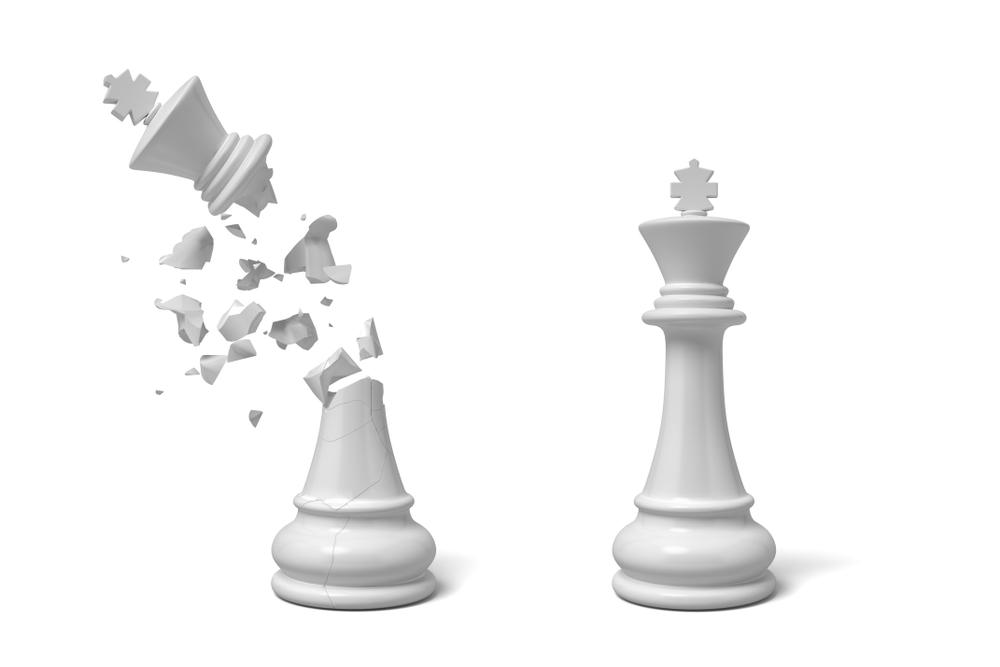
How To Learn From Chess Masters' Mistakes
When I was a student of famous Botvinnik-Kasparov school, the two living legends didn't just teach us how to play chess; they also taught us how to work on chess. The homework that each student would get by the end of a session was invaluable!
Once, Garry Kasparov told me that I needed to improve my play in complicated positions. He asked if I had a copy of his recently published book.

I nodded proudly. So he told me to analyze his game vs. Korchnoi and find as many mistakes in his annotations as possible. It was one of the most complicated games I had ever seen. It is enough to say that Black's knight on e5 was hanging for seven moves!
I spent almost a month analyzing this game and used a whole notebook (about 50 pages) for my analysis. I remember that I found eight major mistakes there, but since the notebook was lost long ago, I cannot show you any of my findings. The most important result of this work was that it indeed improved my play in complicated positions.
It also changed the way I read chess books. Whenever I saw an annotated game, I tried to prove wrong the great player who annotated it. If it said that after a certain variation White would be better, I immediately started to look for the holes in the variation. If I couldn't find any, then I tried to prove that White is not better at the end.
If you work with annotated games this way, then even if you don't find any mistakes, you'll better understand what really happened in the game.

Unfortunately, today this method is not going to work as well as in the old days. Most of the modern chess authors check their work with computers. Even though it is still possible to find mistakes in the computer-assisted annotations, these days it is as difficult as mining bitcoins. I've never hidden the fact that I am a chess Luddite, and it is my strong belief that computers brought more evil than good into chess. This is another sad side of this invasion.
Say you are determined to find as many mistakes in grandmaster annotations as possible. Where should you start? The best choice for this kind of work is unquestionably Alexander Alekhine's books. Practically every other annotated game of this chess titan has at least one clear mistake. I think the reason is very simple. I can be wrong here, but it seems to me that Alekhine has written more chess books and articles than all his predecessors (Steinitz, Lasker and Capablanca) combined!
Considering such an enormous amount of analytical work, mistakes are simply unavoidable!
Some of Alekhine's mistakes are very easy to spot. I bet you'll see it instantly. This is the game 27 from Alekhine's classic 300 Selected Games. Look at his annotation after Black's 21st move:
Play through Alekhine's variation. Do you see anything wrong? Yes, instead of the complicated variation given by Alekhine, White can simply win a minor piece:
Strictly speaking, I shouldn't call it Alekhine's mistake, since his variation is completely winning as well. But why should White go for the complicated line if he can win easily on the spot? It is really strange that IM Panov, who prepared the Russian edition of the book, missed this.
Let's look at another of Alekhine's classical book, International Chess Tournaments in New York 1924 and 1927. Here is an annotation after Black's ninth move in game three:
This time Alekhine's mistake is very serious. Can you find what he missed?
The final mistake that I would like to discuss today is simply stunning. It is the same book, in game two.
Now try to prove Alekhine wrong!
The following game demonstrates that the master Endre Steiner probably studied Alekhine's book and wanted to make a quick draw vs. Capablanca:
After reading this article, some of you might conclude that Alekhine's books are bad. There is nothing further from the truth! The above-mentioned 300 Selected Games was one of the first chess books young Kasparov read. He credits it for establishing his aggressive, attacking style that later became his trademark.
But remember the point: Even when you read the greatest books of greatest chess players, take everything with a grain of salt.



